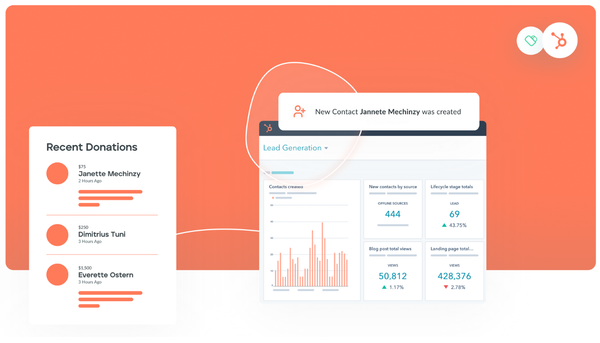5 Creative Ways to Interest Youth in Fundraising

This guest post was contributed by 99Pledges.
For the purposes of this article, the youth will be defined as the latter half of Generation Z and the emerging Generation Alpha, both demographics that can (and one day definitely will) be a powerful force in your nonprofit’s ability to fundraise.
While these generations may not have their own financial wealth accumulated just yet, they’re already exhibiting a desire to make a positive impact on society.
Getting young people involved in your nonprofit’s fundraising now lays the building blocks for a life of charitable giving. So, while they may not be your major givers (financially) just yet, they present a huge opportunity to steward supporters over the long run.
From getting young members involved in church fundraising, to engaging students in your latest PTO fundraising idea, to uniting students in the name of social change in general nonprofit fundraising— this guide has you covered. We’re going to explore the following ways to interest youth in fundraising:
- Make it fun!
- Incentivize them.
- Meet them where they are.
- Emphasize the “why.”
- Engage them with volunteering.
While the youngest generations may not have huge financial power now, these young people have the potential to become supporters for life. Younger people are leading the charge for social change, and that’s a force you want behind your nonprofit.
Continue reading to explore our top 5 tips to get youth involved in fundraising. Let’s dive in!
Make it fun!
Growing up in the digital age, young people have especially short attention spans— with some reports suggesting it’s as short as 8 seconds. To engage the youth in fundraising, whether elementary-aged kids or middle school pre-teens, you really have to work to keep their focus.
One of the easiest ways to do this is to hold unique events, and make them fun! There are a few different event variations that do especially well with school-aged people:
Add a creative twist to a classic event.
Brainstorming event ideas doesn’t have to be a headache. Take a classic event model, whether a walk-a-thon fundraiser (learn more here), a bake sale, or even a penny wars event, and add a creative twist.
For example, hold a Color Run but maintain the same pledge fundraising methods you’ve used for walk-a-thons in the past. Or, hold a bake sale but sell multicultural baked goods so it’s a new experience for all involved.
Get parents involved.
When you were younger, did your parents ever visit you during the lunch break, or maybe during a fundraiser? If so, it was probably the best day, ever.
For young students especially, adding a parent-child aspect can elevate any event. There’s nothing more fun than showing all of your friends just how cool your parents are!
Host an event that engages both parents and students, whether an Iron Chef-inspired cookoff or a parent-child dance. Bring in larger donations from the parents and get the youth excited about participating in fundraising!
Incentivize them.
Parents use incentives to motivate their children every day. From providing an allowance in exchange for completing chores to rewarding good grades with special treats, incentives are a tried and true method for encouraging youth engagement.
It’s easy to apply the same concept to your fundraising. Offer incentives to motivate student participation, such as:
Offering prizes for fundraiser participation.
Reward your student participants when they hit certain fundraising milestones.
This could mean earning an event t-shirt when collecting a certain number of pledged donations in a pledge campaign. Or, it could also mean rewarding the winning group (classroom, small group, etc) in your penny wars campaign by allowing them to participate in a silly challenge, such as pie-ing a leader in your organization.
Celebrate youth participation by rewarding them when they do, and they’ll be interested in doing so again the next time.
Selling an item they want.
Many nonprofits principally working with young people (think: schools, churches, community groups) tend to target the parents with merchandise-based fundraisers. From candles to magazines, these fundraisers aren’t very attractive to a younger audience.
In your next merch-based fundraiser, sell an item younger students might actually be interested in to get them involved. For example, middle school-aged kids, ever-obsessed with fitting in, might be interested in nonprofit t-shirt fundraising where they can buy the same T as their participating peers.
Meet them where they are.
With any fundraiser, you want to meet your donors where they are. With young people, that’s on technology.
This includes spreading the word on social media, incorporating text message reminders (with an older youth audience), and creating a mobile-optimized giving page to accept digital donations wherever and whenever the inspiration strikes.
There are a few best practices to interest youth when using technology in your fundraising:
-
Make It Snappy: Remember the short attention span from the last section? That is especially true on digital devices. Make your communications short yet comprehensive to ensure that information is conveyed before your audience mentally checks out.
-
Make it Mobile-Optimized: Much of internet interaction takes place on mobile phones, from donating to connecting with friends on social media. Make sure your online fundraising is as easily accessed on mobile as it is on desktop.
-
Be Authentic: Young people can tell when you’re not being authentic in your communications (ex: ad-heavy social media) and they do not like it. Instead of heading right to the donation ask, connect with young people on social media with images and videos displaying your nonprofit at work. Further, respond to comments to make it a two-way conversation.
-
Share What You Can: If you’re working with minor volunteers, or sharing images from a fundraising event, remember you can’t share images online without parental permission. Have parents sign a waiver giving permission to share and consider taking your waivers fully digital for more convenience. Visit Smartwaiver to learn more.
Turning to technology is a powerful method for engaging young supporters, from high schoolers to elementary— seriously, there are “Instagram Influencers” under age 10! Check out these best online fundraising campaigns for inspiration for your digital campaign.
Emphasize the “why.”
While their tax-filing parents might be interested, youth are not going to care— at all— about charitable deductions when participating in your fundraiser.
Research shows that 60% of young people want their work to make a difference and that includes the work they do to further charitable causes. This is easier to convey than it may sound!
In your (concise) communications, focus less on what your nonprofit is accomplishing overall and more on what a donor’s specific donation will effect. Consider the following example:
“This year, our nonprofit is raising donations to benefit underserved populations in our community.”
This example showcases the nonprofit involved and it’s general mission. It’s not terrible, but compare it against the following:
“Your participation in our upcoming 5k Color Run provides X meals to underserved populations.”
What’s different between the two examples? The second example is more specific and highlights how the donor’s contribution alone can make an impact. From Millennials to Generation Alpha, centering your donors’ impact in communications is a powerful tip for engaging young supporters.
Engage them with volunteering.
Now, it’s understandable that not every youth will be able to participate in fundraising in a donor capacity. The youngest generations likely won’t have much to donate other than tooth fairy gifts— and they should keep that, they earned it!
However, it’s still important to engage those young people in your campaigns, but simply in a different capacity. Young volunteers are a great resource in your fundraising, from spreading the word to contributing a helping hand at events.
These volunteers lessen the burden on your staff and provide a unique perspective on your efforts. Have you ever consulted a teenager for help navigating technology? Young people have more exposure to emerging technology, so they prove a helpful resource. Well, in a similar vein, youth provide valuable insight on how to engage young people in fundraising as they interact most with the generation!
Play the long game and aim to retain young supporters as volunteers long beyond your current, or most recent, fundraiser. Consistent support now could turn into donations later, when these kids are more independent and managing their own philanthropic portfolio.
Show these volunteers that your organization respects them and their contribution, never belittling them for their young age. Give them responsibilities as a volunteer, from decorating signs for a Fall Festival (one of 99Pledge’s PTA fundraising ideas) to helping organize merchandise for a sales-based fundraiser.
Show young volunteers the impact they can have, without donating their own hard-earned allowances just yet, and watch them return year after year.
Though younger generations may not be your biggest major donors just yet, they can still make a huge impact on your nonprofit’s success for years to come.
Incorporate these four tips in your fundraising to interest young people in the process and start cultivating an attitude of giving at an early age.
About the Author:

Brad Dowhaniuk is the co-founder of 99Pledges, which provides schools and teams with an easy-to-use, web-based fundraising solution to manage and drive success in Fun Runs, jog-a-thons, baseball hit-a-thons, and much more.





